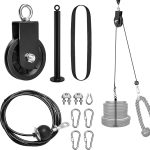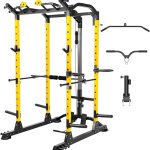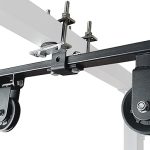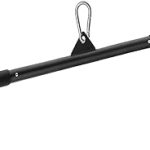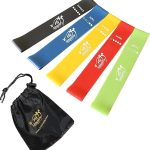As families search for ways to bond and create lasting memories, the great outdoors calls louder than ever. Camping offers a unique opportunity to unplug from technology and immerse ourselves in nature’s beauty. However, as eco-conscious parents, it’s crucial to approach these adventures with sustainability in mind. Eco-friendly camping is not just a trend; it’s a way of teaching our children the importance of protecting the environment while enjoying everything it has to offer.
Investing in sustainable tents helps families tread lightly on the earth during their outdoor escapades. These tents are often made from renewable materials that minimize environmental impact, ensuring your family can enjoy nature without leaving a heavy footprint behind. Plus, many of these options boast enhanced durability and performance. They stand up to the elements so you can focus on what really matters: creating unforgettable experiences with your loved ones around campfires, hiking trails, and under starlit skies.
Curious about which eco-friendly tents might be right for your next adventure? Read on as we unveil ten top-notch options that cater to both your family’s needs and the planet’s well-being!
Understanding Eco-Friendly Materials
When it comes to selecting an eco-friendly tent, understanding the materials used in its construction is essential. Many manufacturers are now turning to sustainable materials such as organic cotton, recycled polyester, and Tencel—a fabric made from sustainably harvested wood pulp. Organic cotton, for example, is grown without synthetic pesticides or fertilizers, making it not only better for the environment but also healthier for families. Recycled polyester, usually sourced from post-consumer plastic bottles, reduces waste in landfills while significantly cutting down on new resource consumption. This shift toward sustainable materials offers a practical way for families to minimize their ecological footprint during outdoor adventures.
Beyond just sourcing eco-friendly materials, durability plays a crucial role in sustainability. A high-quality tent made from robust fabrics can last for years or even decades, which means fewer trips to the landfill over time. Families will appreciate tents designed with long-lasting components that can withstand various weather conditions while continuing to perform optimally season after season. For instance, a well-constructed tent featuring UV-resistant coatings and reinforced seams not only protects your family from exposure but also extends the life of the product itself—making each camping trip more environmentally friendly.
When choosing between natural vs. synthetic options, it’s important to weigh the benefits of each type regarding performance and environmental impact. Natural materials like canvas provide breathability and comfort; however, they may require more maintenance compared to synthetic textiles. Synthetic tents typically offer superior waterproofing and lightweight designs that are perfect for backpacking families who aim for convenience on their journeys. By exploring these choices thoughtfully—keeping both longevity and performance in mind—families can find tents that truly embody sustainable camping practices.
Ultimately, understanding eco-friendly materials empowers families to make informed decisions about their gear choices. Each option presents unique advantages tailored to specific camping needs; thus knowing what fits best when engaging with nature will help foster respect and appreciation for our environment along the way. Embracing these sustainable alternatives makes every campout not just an adventure but also an opportunity to contribute positively to our planet’s health.
Top Features to Look for in Eco-Friendly Tents
When selecting an eco-friendly tent for your family camping excursions, several key features can significantly enhance your outdoor experience while supporting sustainability. First and foremost, consider a lightweight design, which is essential for convenient transport and set-up. A tent that’s easy to carry allows you to explore remote campsites without the burden of heavy equipment. Brands like Big Agnes have taken this into account, crafting tents that utilize ultralight materials without sacrificing durability or space—making them perfect for families who want to minimize their environmental footprint while maximizing comfort during their adventures.
Weather resistance is another critical feature, especially when camping with kids. While it’s essential for a tent to withstand rain or wind, breathability should not be overlooked. Many modern eco-friendly tents offer fabrics made from recycled polyester that repel moisture yet allow airflow, ensuring that your family stays cozy without feeling stifled inside. The REI Co-op’s Quarter Dome tent exemplifies this balance with its weather-resistant capabilities paired with mesh panels for ventilation; it provides parents peace of mind knowing their little ones are comfortable no matter the conditions outside.
Finally, modular components can make all the difference in customizing and repairing your tent over time. Instead of having to replace the entire structure due to wear and tear, look for brands like NEMO Equipment, which design tents with replaceable parts and innovative configurations allowing families to adapt their setups as needed. This feature not only prolongs the life of your purchase but also reduces waste—a principle that aligns perfectly with eco-conscious living. By choosing a family tent equipped with these practical features, you empower both yourself and your children to embark on sustainable journeys rich in exploration and connection with nature.










Brand Spotlight: Innovative Eco-Friendly Tent Manufacturers
As more families embrace the joys of camping, a growing number of companies are stepping up to offer eco-friendly tent solutions. Brands like REI Co-op, Big Agnes, and Naturehike are leading the way with their commitment to sustainability. These manufacturers don’t just create tents; they build products that reflect an ethos centered around environmental stewardship, ensuring families can enjoy nature without leaving a substantial footprint. By utilizing recycled materials and sustainable production methods, these brands exemplify how innovation can marry seamlessly with ecological consciousness.
REI Co-op’s basecamp tents are notable for incorporating recycled fabrics while remaining durable enough for rugged adventures. One standout feature is their use of water-repellent coatings free from harmful perfluorinated chemicals (PFCs), making them safer for both your family and the environment. Similarly, Big Agnes offers ultralight options that utilize sustainable textiles alongside features like built-in storage systems that promote organization and efficiency at camp. This thoughtful design approach not only enhances comfort but also strengthens families’ connections to the natural world.
Community involvement is another facet where these eco-conscious brands shine brightly. REI Co-op invests in community conservation initiatives through partnerships with various non-profit organizations aimed at protecting outdoor spaces and promoting inclusivity in nature access. Big Agnes has also shown leadership by engaging in projects focused on trail restoration and habitat protection — efforts that resonate strongly with such values among family campers. By participating in local clean-up days or sponsoring educational programs about responsible camping practices, these companies create opportunities for customers to actively engage in worthy causes as part of their outdoor experiences.
In addition to advancing sustainability through product design, many of these innovative manufacturers emphasize transparency about their sourcing processes and labor conditions as critical components of their missions. For instance, Naturehike prides itself on ethical practices within its supply chain while providing affordable yet environmentally friendly camping gear accessible to families worldwide. As you explore options for your next adventure, keeping an eye out for brands committed not only to quality craftsmanship but also to broader ecological responsibility will enhance your family’s journey towards sustainable camping practices.
Comparison of Tent Styles and Structures
When it comes to selecting the right tent for family camping, understanding the differences between dome and cabin styles can significantly impact your outdoor experience. Dome tents are renowned for their aerodynamic shape, which makes them highly resilient against wind and rain. They are typically lighter, making them easier to transport on hiking trips. However, dome tents often have sloped walls, which can limit vertical space inside, affecting movement and livability—especially for families with kids who need room to play or store gear.
On the other hand, cabin tents offer straight walls that provide ample interior living space. Many models come equipped with multiple rooms or dividers to give families privacy when needed. This can be especially beneficial during longer camping trips where separation of sleeping areas is a must. Although cabin tents may weigh more and require additional setup time compared to domes, their spacious design often compensates for these drawbacks—making them ideal for extended family adventures where comfort is king.
Equally important is considering size and capacity based on your family’s needs. When choosing a tent, always check its capacity claim; many manufacturers recommend adding an extra person or two above your actual count to account for gear and personal belongings. A family of four might find happiness in a tent rated for six people, ensuring enough elbow room after a busy day outdoors. Take time to visualize not just sleeping arrangements but also how daily activities will unfold in the tent area—it can make a world of difference in enhancing everyone’s camping experience.
Lastly, the ease of setup and breakdown plays a vital role in enjoyable outings—especially when campgrounds are bustling or when rain threatens at dusk. Opting for pop-up designs or color-coded poles can streamline this process significantly. Many modern eco-friendly options now feature quick-setup features that save precious minutes while you settle in or get back on the road quickly after the weekend’s adventure ends. For spontaneous outings with kids in tow, convenience becomes key; having equipment that allows swift transitions between playing outside and enjoying downtime within keeps everyone satisfied as they immerse themselves in nature together!
Tips for Responsible Camping Practices with Kids
Camping is a wonderful way to bond as a family while immersing yourselves in the beauty of nature. To instill a sense of responsibility and awareness about the environment, parents can educate their children on Leave No Trace principles. These seven guidelines—plan ahead, travel and camp on durable surfaces, dispose of waste properly, leave what you find, minimize campfire impact, respect wildlife, and be considerate of other visitors—offer fantastic opportunities for discussion. Families can turn learning these principles into an engaging game or scavenger hunt during their camping trips. For instance, while exploring the campsite, kids could look for signs of others who haven’t followed these principles and come up with suggestions on how they could have done better.
Involving children in campsite setup and cleanup not only teaches them about responsibility but also fosters teamwork and cooperation. Assigning age-appropriate tasks transforms setting up your tent from a mundane chore into a fun activity that everyone participates in. Younger children might help gather firewood or set out sleeping mats while older kids can pitch tents or organize gear. Reinforcing positive behavior by showing them how their efforts directly contribute to maintaining the integrity of the outdoor spaces they love will bolster their appreciation for nature.
In addition to chores, incorporating games that promote eco-awareness can be both enriching and entertaining. A “Nature Bingo” game where kids must find items like specific leaves, animal tracks, or types of rocks encourages them to explore their surroundings closely. Additionally, storytelling sessions around the campfire can involve sharing tales related to nature conservation or discussing animals’ roles in ecosystems to deepen their understanding of our interconnectedness with nature. Such activities make environmental stewardship exciting and relevant as children learn through hands-on experiences.
By weaving education into every aspect of camping—from setting up your tent to playing games—you nurture a generation of eco-conscious individuals ready to protect our planet. Your family adventures can become an avenue for cultivating lasting values centered around sustainability and respect for the great outdoors!
How to Maintain Your Eco-Friendly Tent
Once you’ve chosen the perfect eco-friendly tent for your family adventures, proper maintenance is essential to ensure its longevity and performance. Cleaning your tent after each camping trip can greatly minimize environmental impact while extending its life. A gentle approach works best: instead of tossing it in the washing machine, simply hand wash it with a soft sponge and mild, biodegradable soap. Rinse thoroughly with cool water—taking care not to tug on delicate pockets or seams—and let it air dry completely before storing it away. Avoid using bleach or aggressive chemicals that can damage the environmentally friendly materials used in your tent.
Repairing your tent as soon as you notice wear or damage can significantly prolong its usability. Invest in a repair kit specifically designed for tents and familiarize yourself with some basic sewing techniques; this way, you can patch small tears or fix broken zippers promptly. For those more challenging issues, many eco-conscious brands offer repair services that align with their sustainability principles. You might also consider organizing a “tent health check” during family outings where everyone pitches in to inspect the gear—this helps instill responsibility while making sure you’re all prepared for future adventures.
Proper storage is critical to prevent damage when your tent isn’t in use. It’s advisable to store your tent loosely rather than tightly packed into a stuff sack, which can lead to creasing and structural compromise over time. Use a breathable cotton bag if available and find a cool, dry place away from direct sunlight (as ultraviolet rays can degrade materials). Keeping your camping equipment organized ensures that everything remains ready for spontaneous trips—a joyful way to bond as a family while reinforcing good stewardship habits toward our planet.
By following these straightforward maintenance tips, families not only protect their eco-friendly investment but also establish meaningful routines around caring for nature. In nurturing our camping gear just as we would do with gardens or pets, we cultivate an appreciation for sustainability, ingraining lifelong environmental values in young adventurers along the way.
Real Family Experiences: Testimonials from Eco-Conscious Campers
When families choose to embrace eco-friendly camping gear, they often find themselves not only enjoying the great outdoors but also creating lasting memories that align with their values. Take the Johnson family, for instance. Recently, they embarked on a week-long camping trip in a serene national park using their new sustainable tent crafted from recycled materials. Not only did they feel good about their environmental impact, but they also appreciated how easily the tent set up under the trees—a task made simpler by its lightweight design. “It was a delight to teach our kids about nature while knowing we were giving back,” shared Anne Johnson, reflecting on their commitment to minimalism and sustainability during their adventure.
The benefits of choosing eco-friendly tents are as diverse as the families who use them. The Martinez family discovered that their organic cotton tent helped them stay cool during summer nights without the harsh chemicals found in many conventional options. They felt more at ease breathing in clean air and found joy in involving their children in camp chores made lighter thanks to innovative modular features of their tent. “We could repair it on-site if needed, making it an adventure rather than a hassle,” laughed Diego Martinez as he recounted tales of nighttime stargazing beneath ethically sourced fabric that felt wonderful against their skin.
Such experiences illustrate a growing trend among campers who prioritize sustainability while adventuring together. Michelle and Tom Baker emphasize how using an eco-friendly tent nurtured not just adventures but also important conversations with their teenage children about responsibility towards nature. “Sharing stories around the campfire became so much richer when we discussed why we chose sustainable options,” said Michelle. Encouraged by positive feedback from fellow campers committed to minimizing waste, families like theirs often find camaraderie both in exploring stunning landscapes and sharing insights on responsible camping choices.
These testimonials serve as powerful reminders of what is achievable when families embrace eco-conscious camping practices together. As others share experiences filled with laughter, discovery, and stewardship for our planet, they create an inviting community where adopting sustainable habits becomes not just rewarding but essential—inviting everyone into this beautiful blend of adventure and responsibility for generations to come.
Resources for Sustainable Camping Practices
As you embark on your eco-friendly camping adventures, a wealth of resources is available to help guide you in making sustainable choices. Online platforms like The Eco-Conscious Camper provide valuable insights into camping gear that prioritizes sustainability, as well as tips for living lightly during your outdoor excursions. Additionally, the book “The Green Book of Camping,” written by outdoor experts, offers comprehensive advice ranging from planning eco-friendly trips to reducing water and energy consumption while camping. These resources not only inform but also inspire families to immerse themselves in nature responsibly.
For those seeking eco-conscious campsites, several apps can simplify the process. Sites such as Hipcamp offer an array of options, including private land and lesser-known locations that adhere to environmental standards. They allow users to filter search results based on eco-friendly criteria, making it easier to find spots that resonate with your family’s sustainability values. Similarly, the Campendium app provides detailed reviews about campgrounds while highlighting their eco-practices, ensuring you make informed decisions before packing up the family car.
In addition to finding suitable campsites and gear recommendations, consider enrolling in educational programs focused on outdoor stewardship tailored for families. Organizations like Leave No Trace encourage responsible recreation through workshops and online courses designed to instill respect for nature in both parents and children alike. These programs empower families not only with knowledge but also practical skills that nurture lifelong connections with the environment—skills essential for creating memorable camping experiences centered around sustainability.
By leveraging these resources—ranging from informative websites and books to user-friendly apps and educational programs—you can enhance your family’s outdoor adventures while fostering a deeper understanding of our natural world. Together, let’s raise a generation of environmentally conscious campers dedicated to preserving the beauty of our planet for years to come!
Embrace Eco-Friendly Camping for the Whole Family
Choosing eco-friendly tents for your family camping trips is more than just a trend—it’s a commitment to our planet. By opting for sustainable options, you not only minimize your impact on nature but also inspire your children to appreciate and protect the environment. Each adventure in a green tent nurtures lasting memories while fostering values of responsibility and stewardship.
We encourage you to make conscious choices that benefit both your family and the earth. As you explore the great outdoors, consider sharing your experiences or favorite eco-friendly products in the comments section below. Together, we can continue to support sustainable camping practices and spread awareness within our community. Happy camping!


